BMS 303141
Synonym(s):3,5-Dichloro-2-hydroxy-N-(4-methoxy[1,1′-biphenyl]-3-yl)-benzenesulfonamide
- CAS NO.:943962-47-8
- Empirical Formula: C19H15Cl2NO4S
- Molecular Weight: 424.3
- MDL number: MFCD25976797
- SAFETY DATA SHEET (SDS)
- Update Date: 2024-11-19 23:02:33
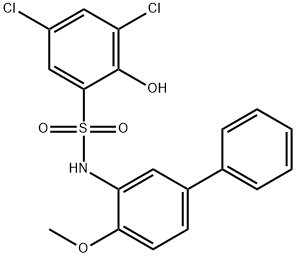
What is BMS 303141?
Description
BMS-303141 (943963-47-8) is a potent and selective ATP citrate lyase (ACL) inhibitor, IC50=0.13 μM. Inhibits lipid biosynthesis, IC50=8 μM in HepG2 cells.1,2?Reduces weight gain, lowers plasma cholesterol, triglycerides and glucose in high-fat-fed mice.2?A novel tool compound for exploring the potential of ACL inhibition as a target for metabolic disorders such as obesity and dyslipidemia.2?Impairs proliferation or induces death in androgen-depleted castration resistant prostate cancer cells.3?Reduces cell cycle progression in iBN cells.4
The Uses of BMS 303141
BMS-303141 has been used for inhibition of ATP citrate lyase in breast cancer cell lines.
Definition
ChEBI: 3,5-dichloro-2-hydroxy-N-(2-methoxy-5-phenylphenyl)benzenesulfonamide is a member of biphenyls.
Biochem/physiol Actions
BMS-303141 is a potent inhibitor of ATP citrate lyase (ACL). BMS-303141 inhibits lipid synthesis in HepG2 cells with an IC50 of 8 μM, and lowers plasma triglycerides in a murine hyperlipdemia model.
storage
Store at -20°C
References
1) Li?et al. (2007),?2-hydroxy-N-arylbenzenesulfonamides as ATP-citrate lyase inhibitors; Bioorg. Med. Chem.,?17?3208 2) Ma?et al.?(2009),?A novel direct homogeneous assay for ATP citrate lyase; J. Lipid Res.,?50?2131 3) Shah?et al.?(2016),?Targeting ACLY sensitizes castration-resistant prostate cancer cells to AR antagonism by impinging on an ACLY-AMPK-AR feedback mechanism; Oncotarget,?7?43713 4) Rhee and Dekoter (2017),?Regulation of Lipid Metabolism and Cell Cycle Progression by PU.1 in Myeloid Progenitor Cells; Blood,?130?2433
Properties of BMS 303141
| Boiling point: | 591.5±60.0 °C(Predicted) |
| Density | 1.462±0.06 g/cm3(Predicted) |
| storage temp. | 2-8°C |
| solubility | DMSO: soluble20mg/mL, clear |
| form | powder |
| pka | 4.94±0.48(Predicted) |
| color | white to beige |
| Stability: | Stable for 2 years from date of purchase as supplied. Solutions in DMSO or ethanol may be stored at -20°C for up to 3 months. |
Safety information for BMS 303141
| Signal word | Warning |
| Pictogram(s) |
 Exclamation Mark Irritant GHS07 |
| GHS Hazard Statements |
H302:Acute toxicity,oral H315:Skin corrosion/irritation H319:Serious eye damage/eye irritation H335:Specific target organ toxicity, single exposure;Respiratory tract irritation |
| Precautionary Statement Codes |
P261:Avoid breathing dust/fume/gas/mist/vapours/spray. P305+P351+P338:IF IN EYES: Rinse cautiously with water for several minutes. Remove contact lenses, if present and easy to do. Continuerinsing. |
Computed Descriptors for BMS 303141
New Products
Tert-butyl bis(2-chloroethyl)carbamate 4-Methylphenylacetic acid N-Boc-D-alaninol N-BOC-D/L-ALANINOL 3-Morpholino-1-(4-nitrophenyl)-5,6-dihydropyridin- 2(1H)-one Furan-2,5-Dicarboxylic Acid Tropic acid DIETHYL AMINOMALONATE HYDROCHLORIDE 1,1’-CARBONYLDIIMIDAZOLE R-2-BENZYLOXY PROPIONIC ACID 1,1’-CARBONYLDI (1,2-4 TRIAZOLE) N-METHYL INDAZOLE-3-CARBOXYLIC ACID (2-Hydroxyphenyl)acetonitrile 4-Bromopyrazole 5-BROMO-2CYANO PYRIDINE 5,6-Dimethoxyindanone 5-broMo-2-chloro-N-cyclopentylpyriMidin-4-aMine 2-(Cyanocyclohexyl)acetic acid 4-methoxy-3,5-dinitropyridine 2-aminopropyl benzoate hydrochloride 1-(4-(aminomethyl)benzyl)urea hydrochloride diethyl 2-(2-((tertbutoxycarbonyl)amino) ethyl)malonate tert-butyl 4- (ureidomethyl)benzylcarbamate Ethyl-2-chloro((4-methoxyphenyl)hydrazono)acetateRelated products of tetrahydrofuran
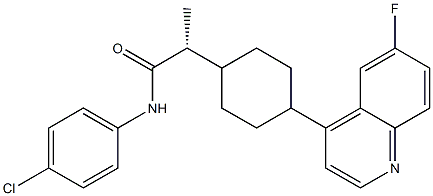
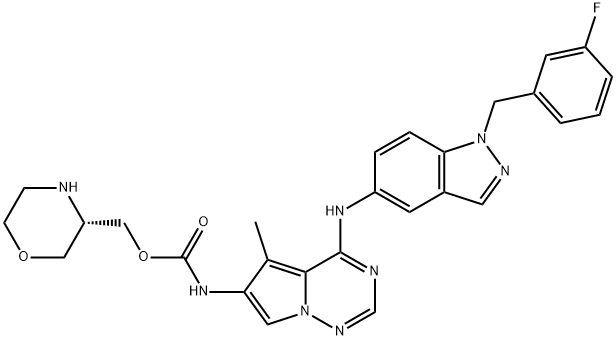

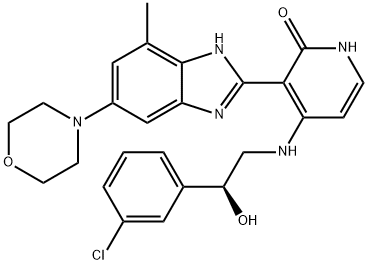
![2-Piperidinecarboxylic acid, 1-[[2,6-dimethoxy-4-[(2-methyl[1,1'-biphenyl]-3-yl)methoxy]phenyl]methyl]-, (2S)-](https://img.chemicalbook.in/CAS/20180702/GIF/1675201-83-8.gif)
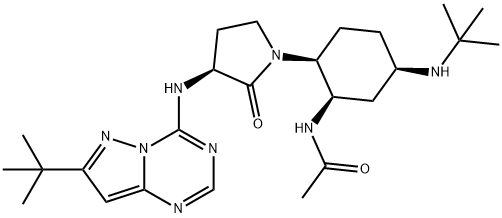
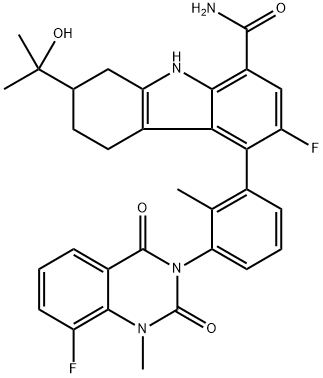
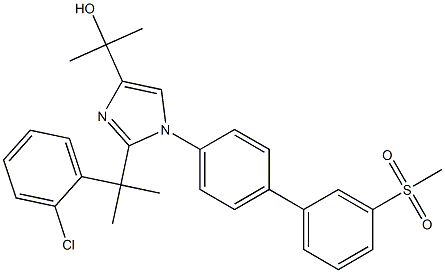
You may like
-
 BMS-303141 >95% CAS 943962-47-8View Details
BMS-303141 >95% CAS 943962-47-8View Details
943962-47-8 -
 BMS-303141 CAS 943962-47-8View Details
BMS-303141 CAS 943962-47-8View Details
943962-47-8 -
 1975-50-4 98%View Details
1975-50-4 98%View Details
1975-50-4 -
 2-HYDROXY BENZYL ALCOHOL 98%View Details
2-HYDROXY BENZYL ALCOHOL 98%View Details
90-01-7 -
 2-Chloro-1,3-Bis(Dimethylamino)Trimethinium Hexafluorophosphate 221615-75-4 98%View Details
2-Chloro-1,3-Bis(Dimethylamino)Trimethinium Hexafluorophosphate 221615-75-4 98%View Details
221615-75-4 -
 14714-50-2 (2-Hydroxyphenyl)acetonitrile 98+View Details
14714-50-2 (2-Hydroxyphenyl)acetonitrile 98+View Details
14714-50-2 -
 118753-70-1 98+View Details
118753-70-1 98+View Details
118753-70-1 -
 733039-20-8 5-broMo-2-chloro-N-cyclopentylpyriMidin-4-aMine 98+View Details
733039-20-8 5-broMo-2-chloro-N-cyclopentylpyriMidin-4-aMine 98+View Details
733039-20-8